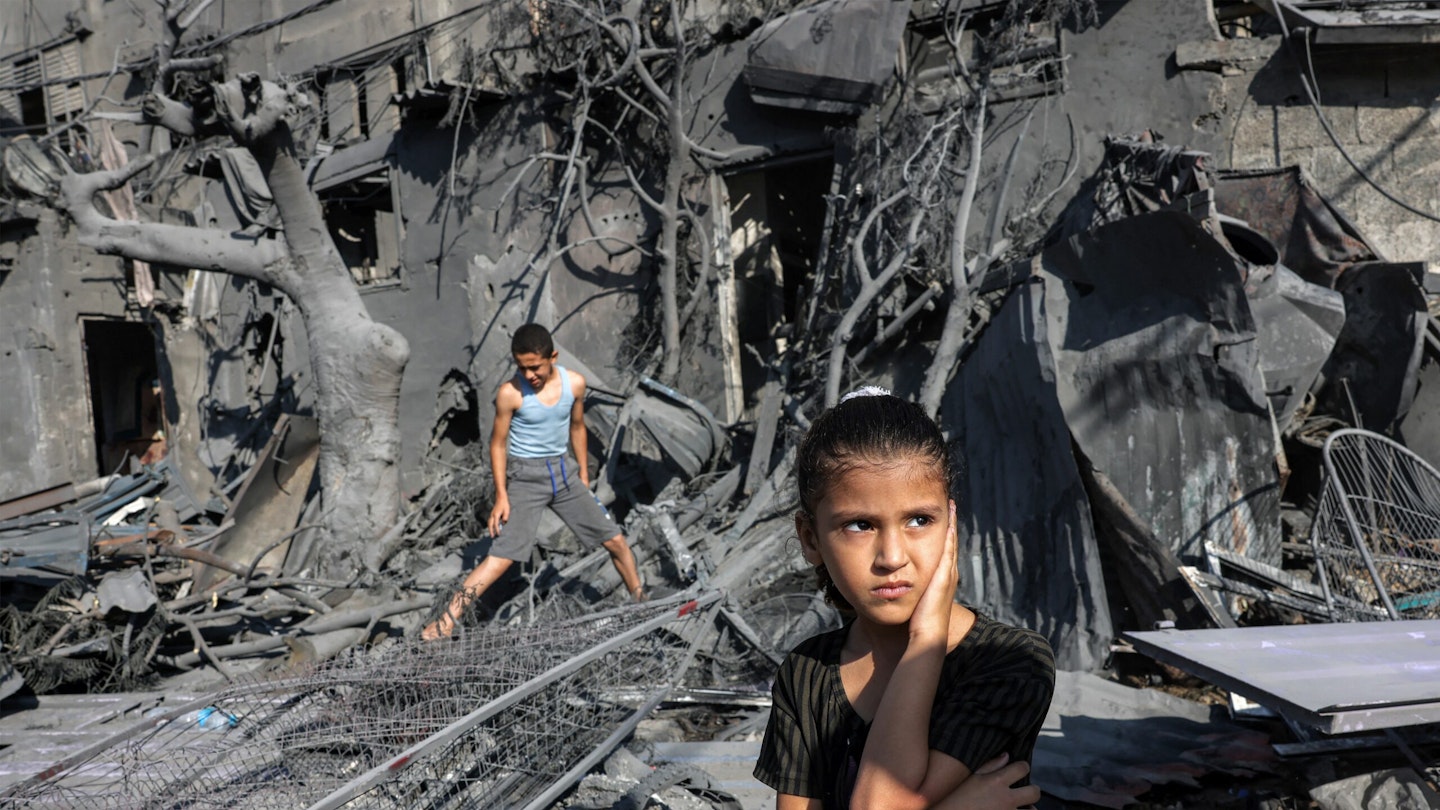it was 6.30am on Saturday 7 October when I got the call from my producer. There had been an horrific attack in Israel. No one understood the full scope and scale of it yet, but Israeli Prime Minister Benjamin Netanyahu had announced that the country was in a state of war. In the coming days, we learned thatHamas, which controls the Gaza Strip, had murdered 1,200 people in a terror attack in Southern Israel, including hundreds at a music festival and in the kibbutzim close to the border. They also took an estimated 240 hostages.
I immediately flew to Jordan with my team and drove into Israel, to where the music festival massacre had happened hours earlier. It was a very volatile situation; Hamas were still at large. That first night we were driving and had to quickly turn the car around because there was a gun battle between Hamas and the Israel Defense Forces (IDF) on the road ahead.
Along the southern border with Gaza lay the bodies of Hamas fighters and their victims’ vehicles, riddled with bullet holes, which had either crashed or careered off the road. I looked in the window of one and saw blood and teeth everywhere. It was eerily deserted. Cars were abandoned as people had fled just hours earlier. People had dropped their belongings and run, or they’d been captured. I’ll never forget the empty baby’s pram we saw. At Be’eri, the first kibbutz I visited, the damage was extraordinary. I began to understand the magnitude of what had happened.
Two days in, my team and I were shooting news footage when air raid sirens sounded. We didn’t have time to run for cover so we had to dive into a ditch. I lay there, heart pounding through my chest, listening to rockets overhead. We could hear the explosions as some of them were intercepted by the Iron Dome – the Israeli mobile air-defence system. In the space of a week, we watched the death toll in Israel climb from 300 to 1,200.
At the same time, an aerial bombardment had started across the border in Gaza, where there is no Iron Dome, as the Israeli military retaliated, so we were also trying to understand what was being targeted there and how many civilians had been killed. International news organisations, including CNN, are still trying to gain access to Gaza, so we can report on the ground there. As Grazia went to press, the death toll in Gaza had surpassed 15,000, including more than 5,000 babies, according to the Hamas-run health ministry. Gaza hospitals have been under constant fire as Israel says Hamas uses them as bases. We’ve watched unbearable scenes as babies in incubators have been caught in the crossfire, with 28 eventually transported to Egypt for medical care.
One story I’ll never forget is the interview I did with 22-year-old Yara, who lives in Gaza, who cried as she told me over a video call how her brilliant school friend had been killed that morning, and how she and her family had been told to evacuate but they were too afraid to move and didn’t have anywhere to go.
Another story that will stay with me was an interview I did in Israel with Thomas Hand, who lives in the Be’eri kibbutz. His eight-year-old daughter Emily went to a friend’s sleepover the night of the attack and he hadn’t been able to find her since. The following day he was told she was dead. His reaction to this news, he said, was relief. ‘It’s the best of the possibilities I knew,’ he told me, tears streaming down his cheeks, ‘because she was either dead or in Gaza, and that is worse than death.’ Then, in an extraordinary turn of events, weeks later he was told by the IDF that they think Emily is still alive and in Gaza after all. Then on 27 November, he was finally reunited with her following a hostage release.
The horror of what we’ve seen in Israel and Gaza and the tremendous, tragic loss of life is one thing. But this is also a very challenging conflict to cover because it is more than 70 years in the making. People have strong feelings and demand you take a side. I’ve received death threats and had people posting pictures of my children and saying they hope I have to watch them die. The other complication is the level of misinformation and the way so many are learning about this on social media, where there is little nuance, objectivity or context.
I find it baffling that one of the most common comments I get on Instagram is: you need to pick a narrative – because I’ve been focusing on the victims on both sides. Actually, as a journalist, picking a narrative is the opposite of what you should do. It takes a lot of composure to try to tune out the intensity of that noise and the nastiness, the threats, the fake clips and the slicing and dicing of your words. But, ultimately, I know I have to tell this story as fairly and accurately as I know how to do.
Following a huge amount of international pressure, in November the Israelis agreed to a pause in fighting in return for the release of hostages, 110 of whom were freed, while 240 Palestinian prisoners were released.
On 1 December, the seven-day ceasefire – and the flow of humanitarian aid – ended, with Israel attacking targets in both northern and southern Gaza. I think, with a very heavy heart, that the foreseeable future entails more suffering. I don’t see a vision being laid out that would offer Israelis and Palestinians a better hope for a peaceful life together. In the meantime, my job is to tell stories that help the world understand the issue and which will hopefully, somehow, foster a shared sense of humanity.
Clarissa Ward in CNN’s chief international correspondent
